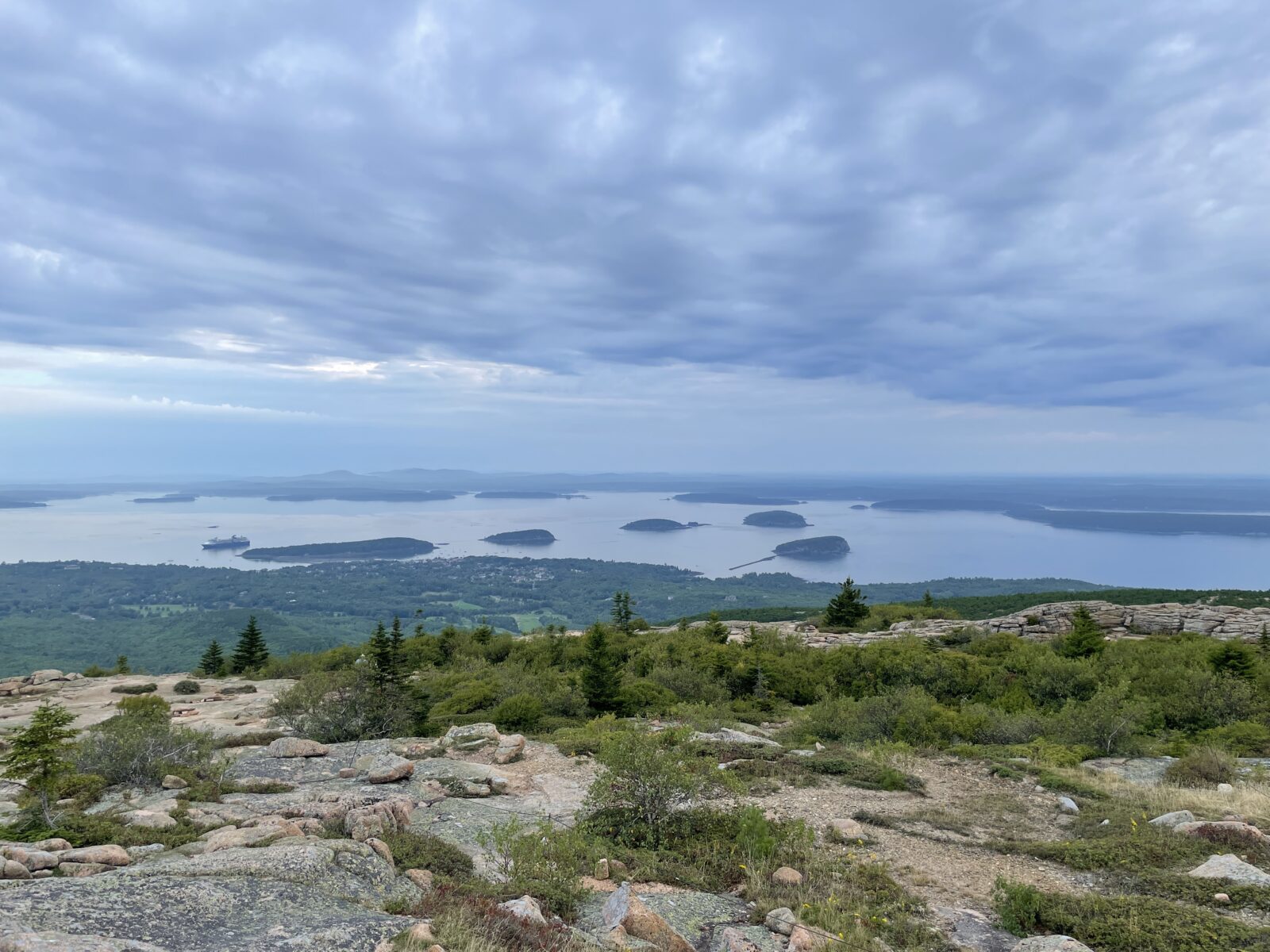In addition to all of the geocaching I planned, I also thought I’d try activating some parks. Parks on the Air (POTA) is a program inspired by the ARRL National Parks on the Air program in 2016 by Sean Kutzko (KX9X) and Norm Fusaro (W3IZ). The idea is simply “everyday is field day,” that is, you take your radio crap to one of thousands of state or national parks, make ten contacts, and thus “activate the park.” Unlike Summits on the Air (SOTA), one can usually drive close enough to a park, which makes it more accessible.
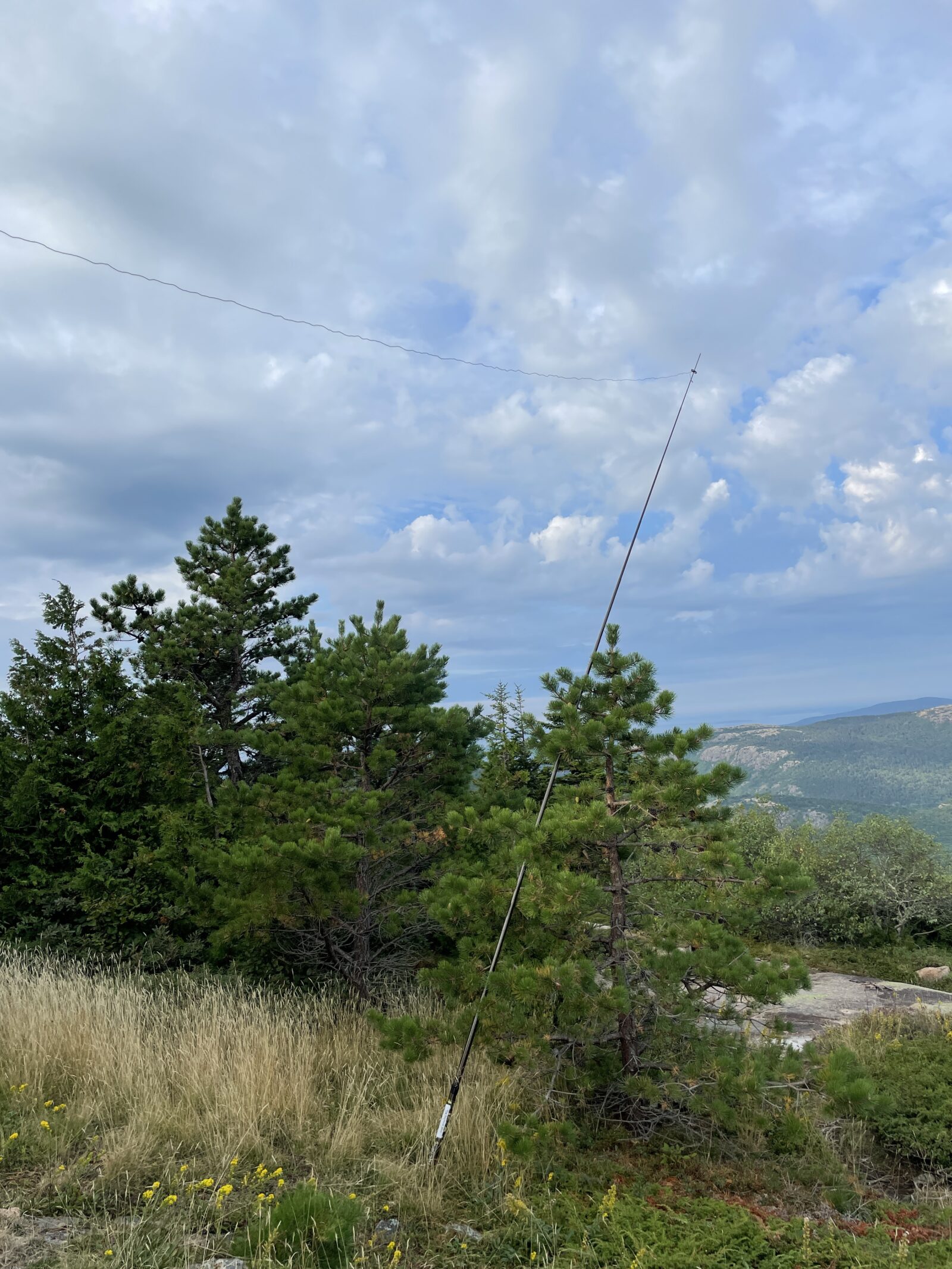
While I’ve “hunted” hundreds of different parks, I’d only attempted activations twice in nearby Lake Sammamish State Park. Both times were a learning experience that contributed to success later:
- First attempt 2022-07-20: Around lunchtime, I was thinking “I should get out of the house for a bit.” One thing led to another, and I am sitting in a picnic bench in Lake Sammamish State Park messing with my Buddipole and trying to make contacts, any contacts. I thought I only needed five, so I stopped at 6 … when ten was the number. I don’t know what’s going on with the Buddipole – on paper, it should be really good, but it’s been awful in practice. I also realized that I needed some fluorescent marking tape because people don’t pay attention and would walk right into the antenna.
- Second attempt: 2022-08-23: I waited way too long to get around to coming back. I had recently purchased a used Packtenna end-fed and tried both that and an Elecraft AX2 antenna. Both were fine, though the Packtenna (not surprisingly) outperformed. Easily made my ten contacts and a few bonus ones, then headed home.
- Pre-trip attempts three and four never happened. I was … concerned, but it’s my own damned fault for not spending more time practicing. However, I did identify three to five opportunities during my travels.
Ask for forgiveness, not permission
In betwixt all this, I was curious about the permissions necessary, in part, because Jim Williams (N4JAW) had run into issues with a park employee inexplicably removing his antenna while he was operating right there.
Acadia National Park (K-0001) was the first one I was going to be attempting. There was nothing on their site pro- or con- about ham radio, so I made a general inquiry, which was a complete mistake. My question beget other questions, and rather than having a conversation about it, they reluctantly said “You can operate from your car.” There was no explicit prohibition, but a definite freak-out as the CC: chain in the email increased.
The moral here is, for casual use, don’t ask permission in advance, because it’s too easy for them to say “no” rather than understanding that you’re not going to <reason>. So just Ask when you show up.
I had a reservation to go to the top of Cadillac Mountain very early in the morning. I found a secluded spot, set everything up then realizedI had forgotten to bring a connector cable between the Packtenna and the radio. Fortunately, I had two other antenna options at my disposal and those worked fine, especially with the elevation. I made my necessary contacts, “activating” the park. I packed up, got off the mountain (which was getting crowded now), dropped my gear off at the AirBnB, and went geocaching for the rest of the day. In the evening, I uploaded all of the logs to Pota.app, LoTW, QRZ, and eQSL.
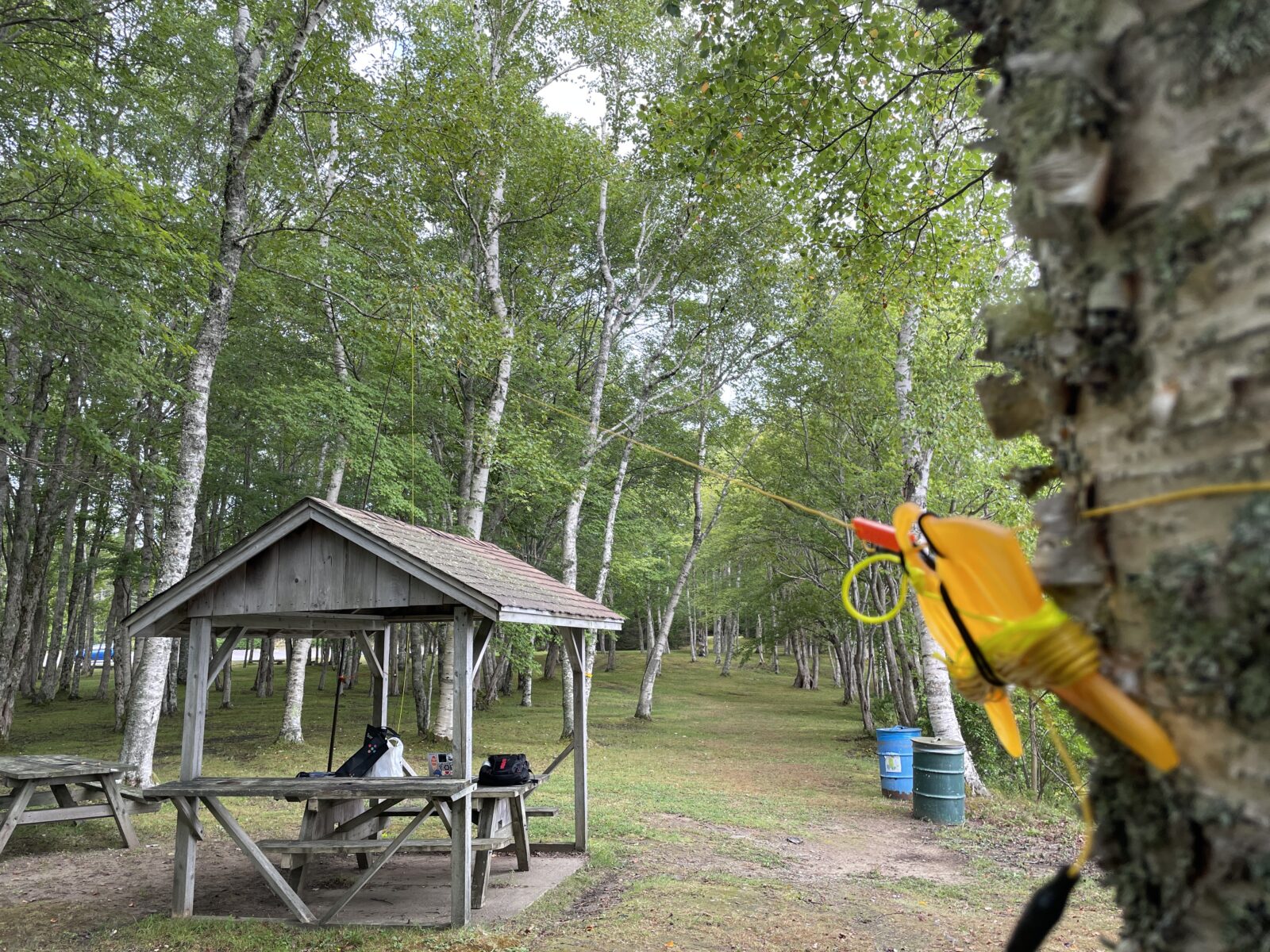
The next attempt would come in Nova Scotia. I took the Bar Harbor to Yarmouth ferry, arriving in Yarmouth very late. I penciled in visiting Ellenwood Lake Provincial Park. As it was a Wednesday, I had the opportunity to get some CW contacts during the CWOPS regularly-held CWT event.
Canada has a reciprocal operating agreement with the US. The only tricky thing is I would have to operate as WT8P/VE1. Prior to leaving, I explored what’s involved in setting up logging and … it’s straightforward, but with some key steps that would be easy to miss. That will be a future blog entry.
Not wishing to repeat the mistake I made with Acadia, I just showed up, found the main kiosk, and asked if it was okay to set up. No problem at all. They even directed me to these cute little shelters where I’d have some cover from the breezy mist. I used my “Bandhopper” antenna with the pole and easily made the requisite CW contacts, including some regular contacts I normally make from the opposite end of the continent. Before I left, I picked up a few geocaches in the park.
My third activation site was going to be on Prince Edward Island. I was originally going to take the Caribou ferry across, stay overnight in Charlottetown with an attempt on the way. However, because I planned this late, the only hotel in Charlottetown was atop a museum that regularly had events until 2am. So hard-pass there. Instead, I drove from Halifax through Moncton, crossed the bridge. There was a cluster of three potential areas, none of them having been “activated, and the first one I tried had some good vibes: Marine Rail National Historical Park (VE-5775).
The park manager gave his blessing and I set up under this little sheltered area, anchoring my antenna to the picnic table. It was very breezy, but everything held fine. Made all of my contacts, this time as WT8P/VY2, then packed up and did some geocaching on the island. The drive back across Confederation Bridge would be a $50.25 toll.
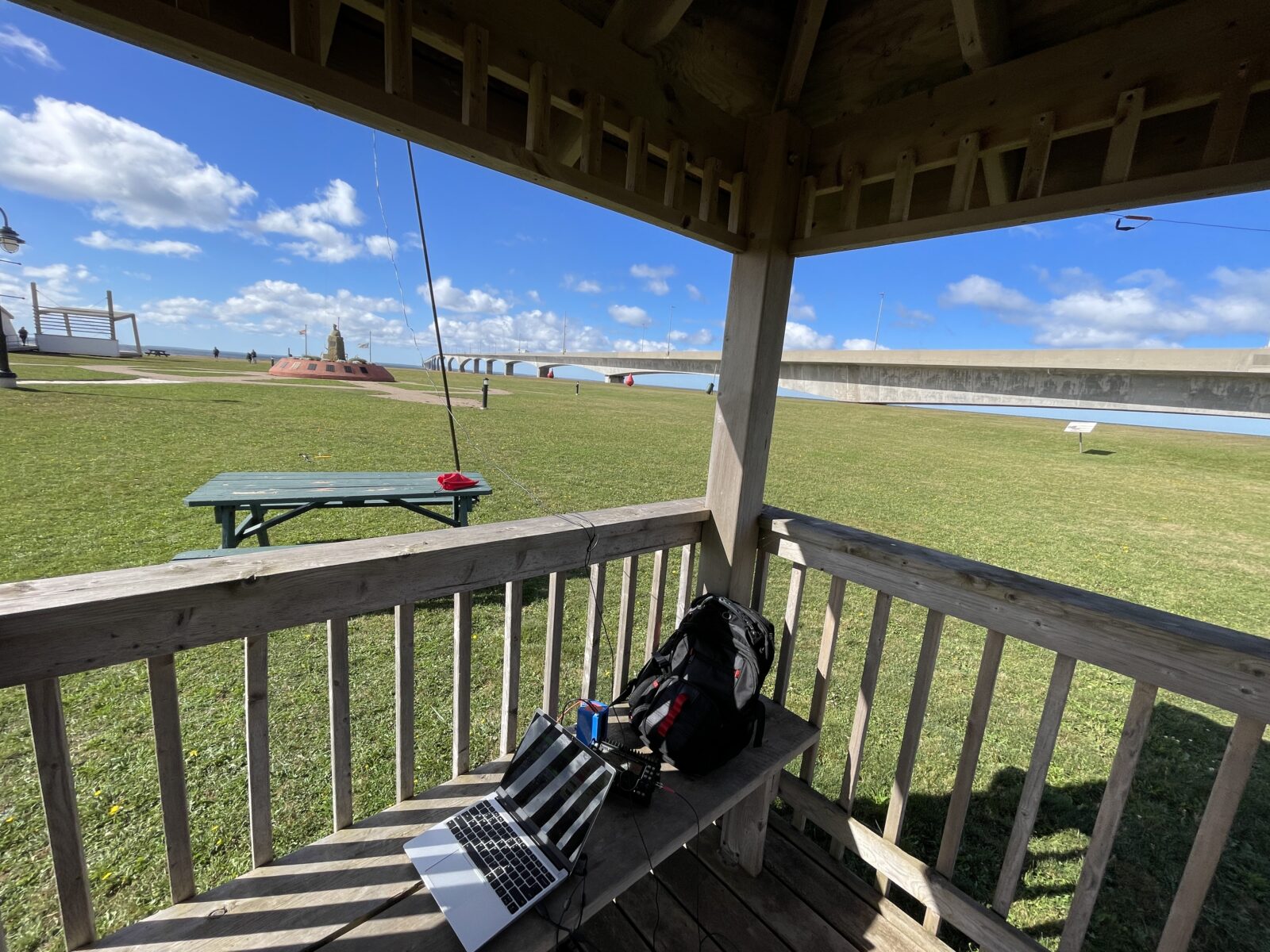
Back across, it was too early for me to check into my AirBnB. I walked on a puzzle trail that I’d solved earlier. The trail is probably best done on snowmobile in the winter. All of the hides were essentially a container within a container hanging on a tree about 7m off the trail. I did about seven of these before moving on.
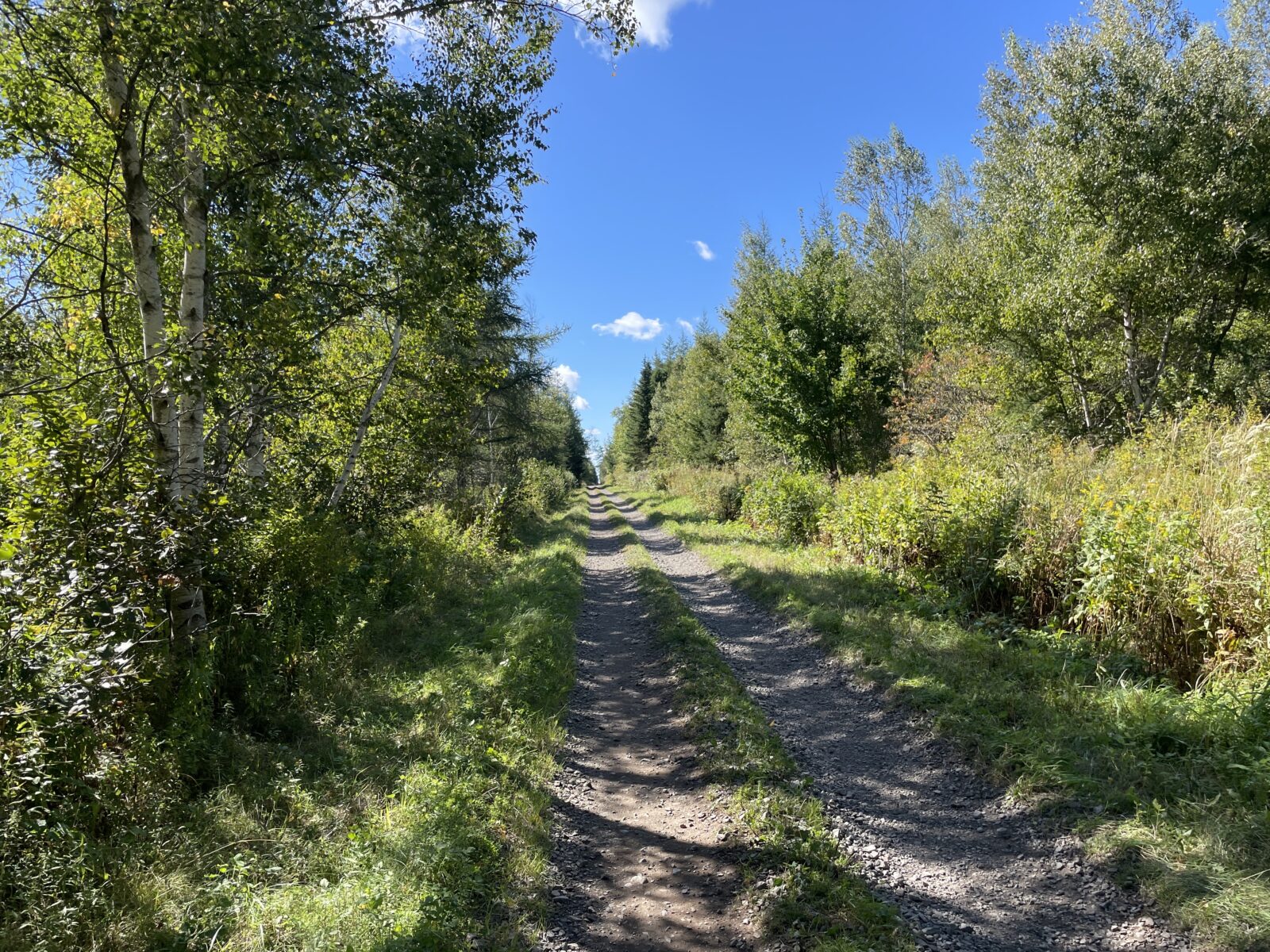
I continued to my lodging in Sheldiac, checked in, and then went out for a Lobster Club Sandwich before the dinner crowds started trickling in.
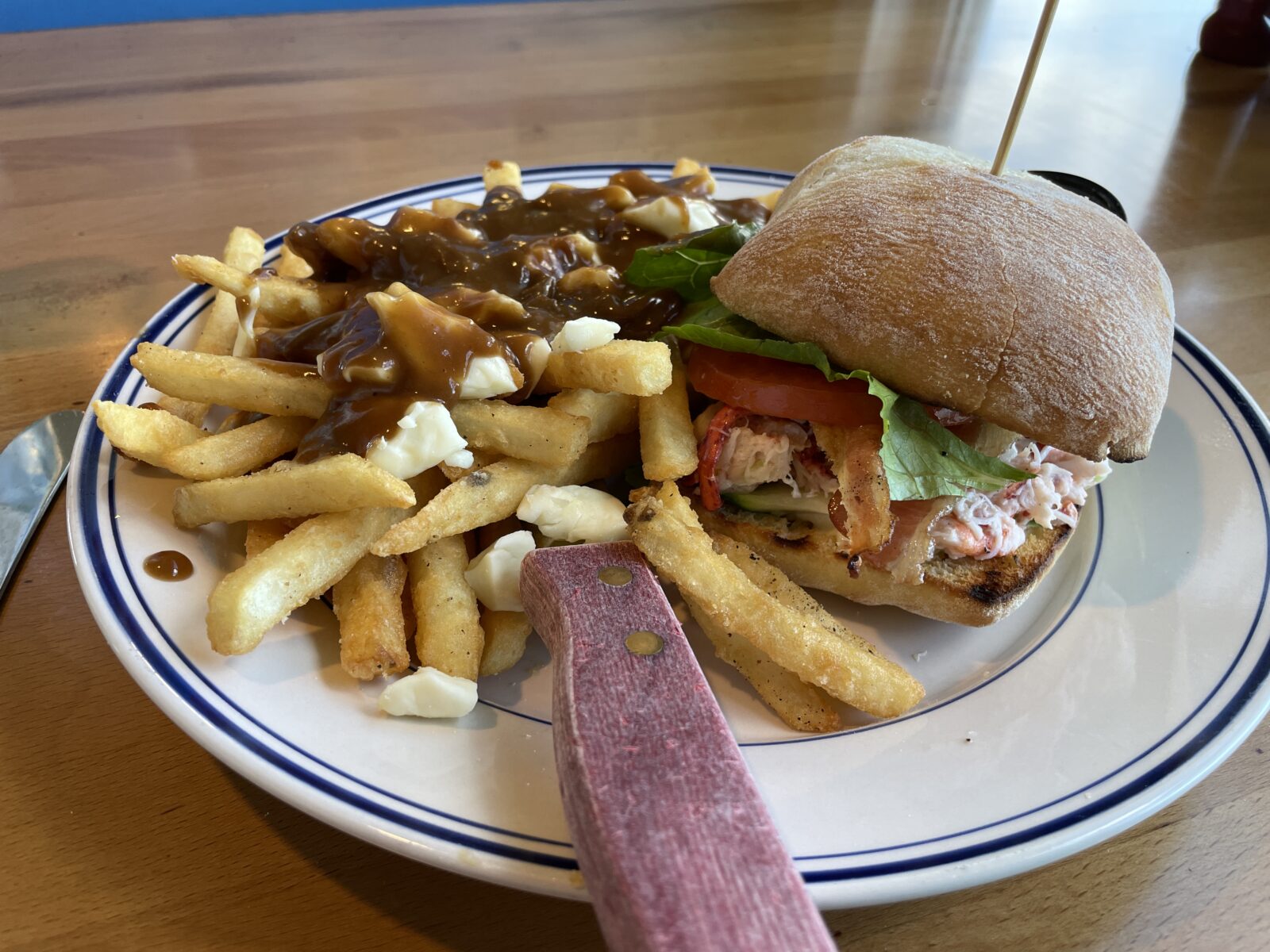
Rested, fed, and hydrated, I then wandered over to the Parlee Beach Provincial Park (VE-0792) to find a place to set up. There was nothing that wasn’t already spoken for, leaving me just plopped on the ground in front of my car, antenna tucked between trees.
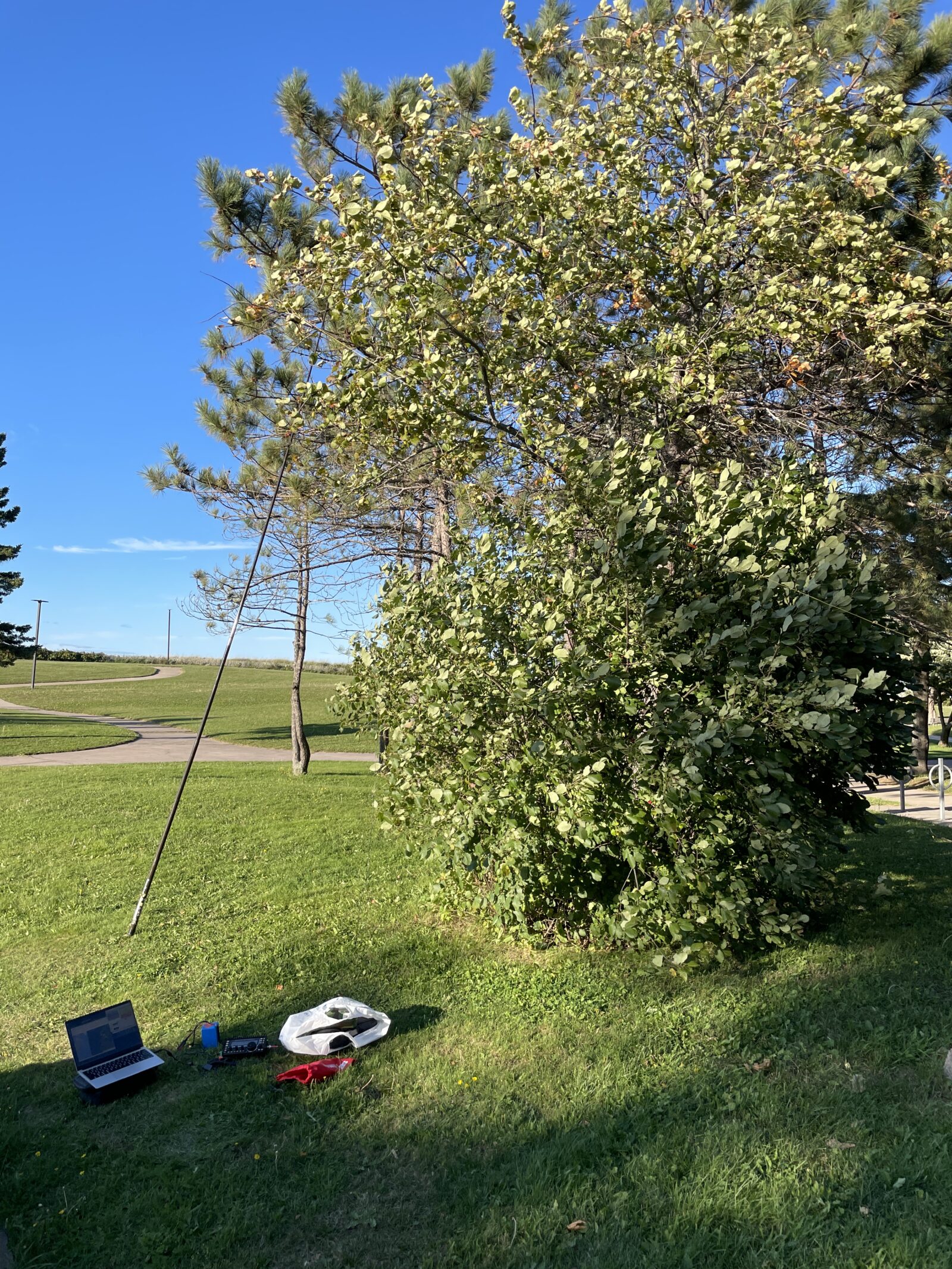
I made 22 contacts as WT8P/VE9 before packing it back up and heading to the bnb to drop off my radio stuff. As it was getting to be later in the evening, I thought I’d head west to do some wandering around downtown Sheldiac, NB. I couldn’t figure out how to do that with the main road closed to repair water pipes.
A very tentative was planned near Bucksport, Maine (near the Alamosook Inn I was staying), but the weather wasn’t cooperating. I did attempt to reach my homies doing the 7th Area QSO Party, but while I could hear them, they couldn’t hear me.
Final thoughts:
- Logging is still tedious. By Parlee Beach, I was using the HamRS app, then transferring the ADIF file it generated to my laptop, cleaning up the data, and uploading it to a variety of sources. Still better than paper (and messing up UTC) that I did on Field Day
- Had I not forgotten the BNC connector, I would likely have used the Packtenna. Instead, I stuck with the Bandhopper. The Elecraft AX2 antenna was unusable on 20m (its target band), though I was able to tune it on 17m, 15m, and 30m when I was in Acadia.
- Because the FAA/Airlines limit the carry-on lithium ion battery size to 160Wh or less, I took my 6Ah battery instead of the 15Ah. I didn’t run into any limitations for the KX3 power. Laptop power came close to running out (though I did have a PD pack.). If I used an external amplifier, I’d really want the larger for options.
- The KX3 did very well and its tuner is excellent at trying to find a workable solution. Repeatedly assembling and disassembling improved my efficiency at that task.
- Untangling the BandHopper’s wires from the tree in Alamosook was challenging. I eventually had to use the main pole to try bending branches or lifting wires.
